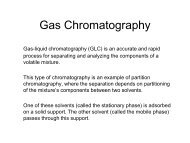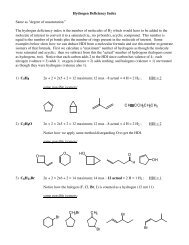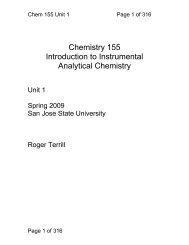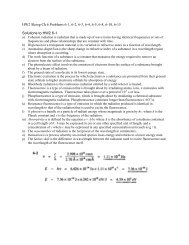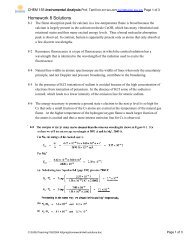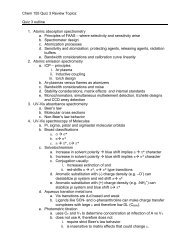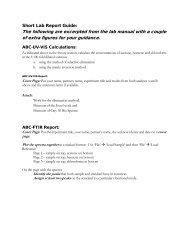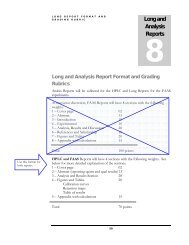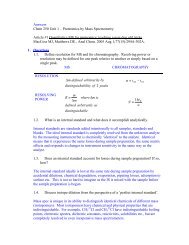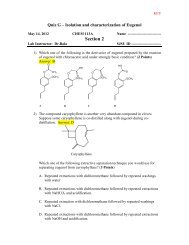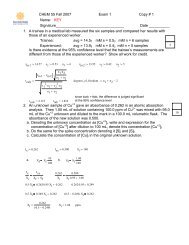Final Prep Answers
Final Prep Answers
Final Prep Answers
You also want an ePaper? Increase the reach of your titles
YUMPU automatically turns print PDFs into web optimized ePapers that Google loves.
Chem 155 <strong>Final</strong> review topics and questions:<br />
5. By what basic mechanism does the photodiode produce an electric current when<br />
light strikes it<br />
The photodiode is reverse-biased. This means that without light, no current flows. The<br />
PN junction of the photodiode is exposed to light. When light strikes the PN junction it<br />
may create electron-hole pairs. The bias will then sweep apart the electron-hole pairs<br />
and convert the light into an electrical current.<br />
6. What happens at a p-n junction when a reverse-bias is applied Draw a diagram<br />
to support your answer. Why are photodiodes operated in reverse bias<br />
+<br />
+<br />
+<br />
+<br />
+<br />
-<br />
-<br />
-<br />
-<br />
The photon (red arrow) strikes the photodiode in the depletion region and an<br />
electron-hole pair is generated. The electron and hole (red circles) are swept<br />
apart by an electric field. In reverse bias, the diode produces zero current in the<br />
dark. Low or zero dark current is a good quality in a photo-detector.<br />
7. What is the maximum gain of a photodiode transducer Is this better than a<br />
phototube<br />
Photodiode max gain = 1 = equal to the phototube max gain.



